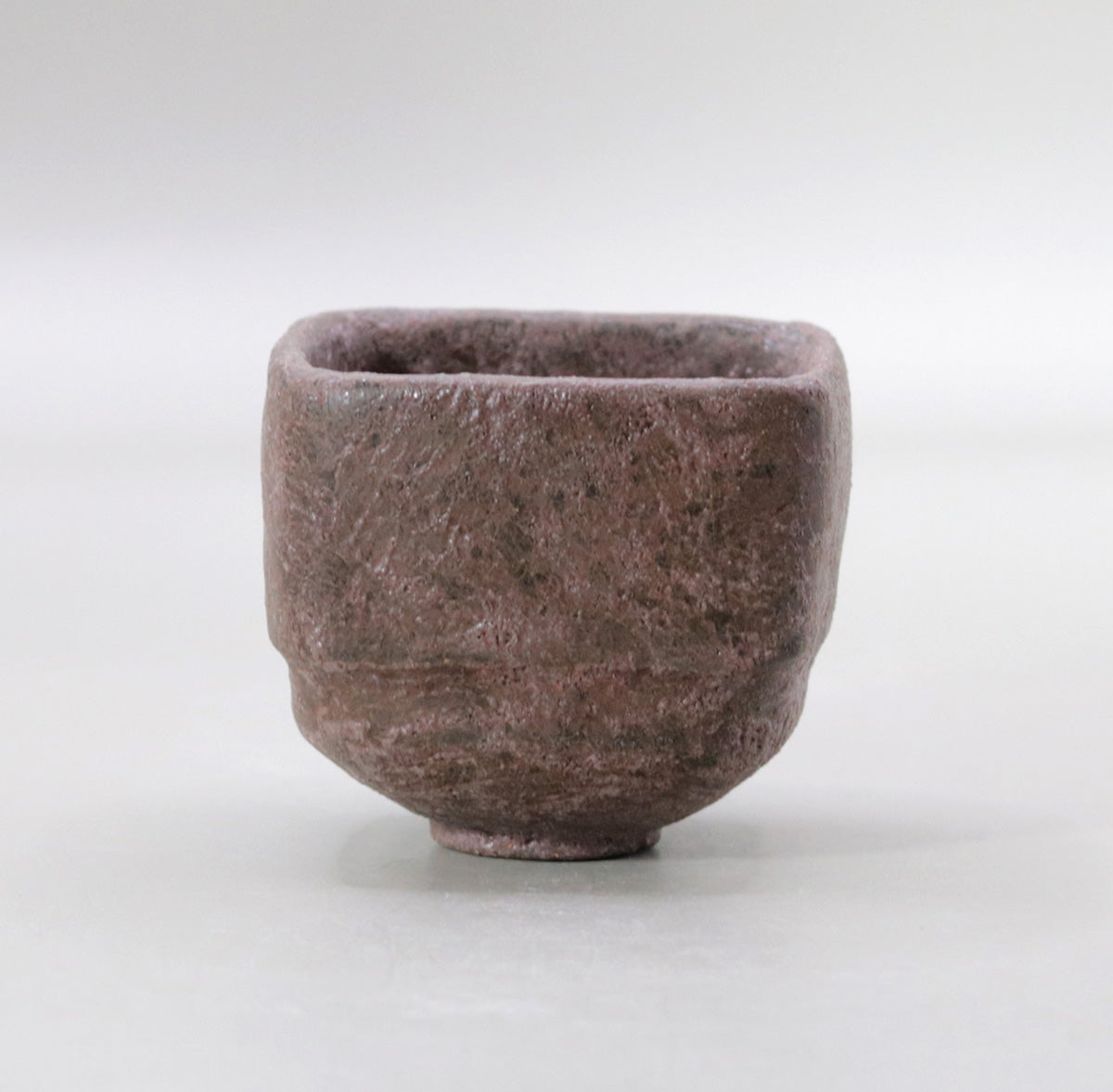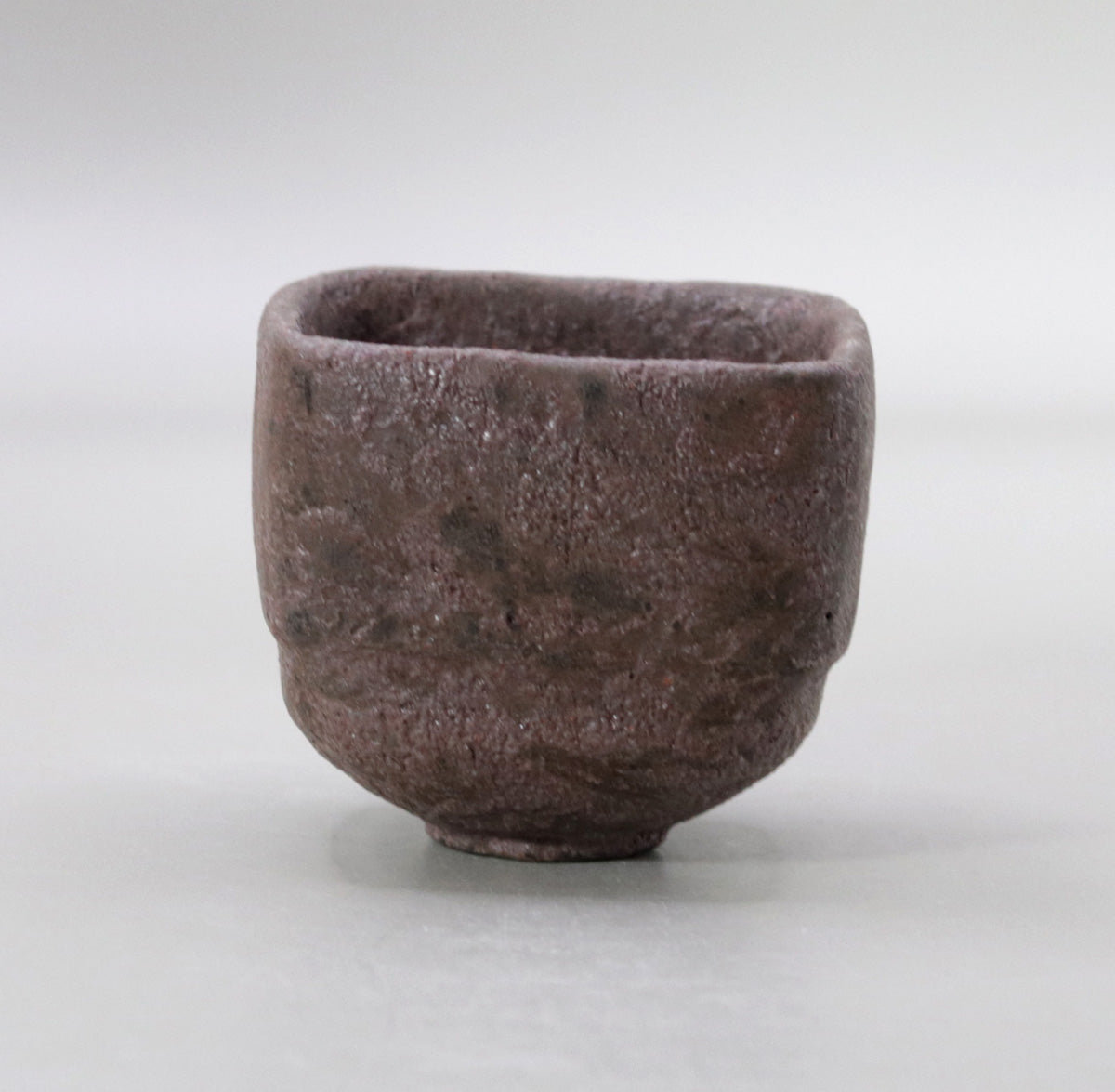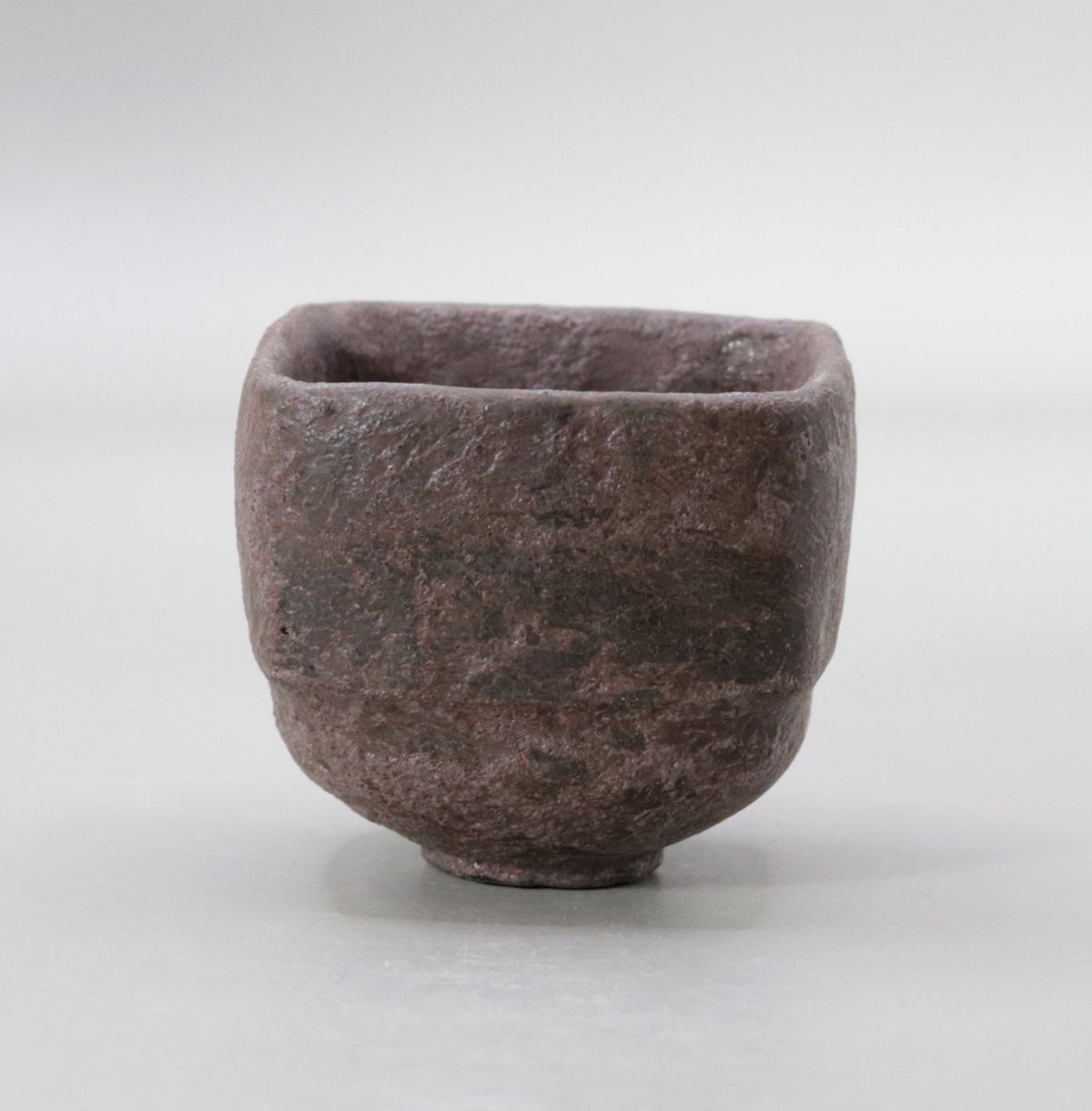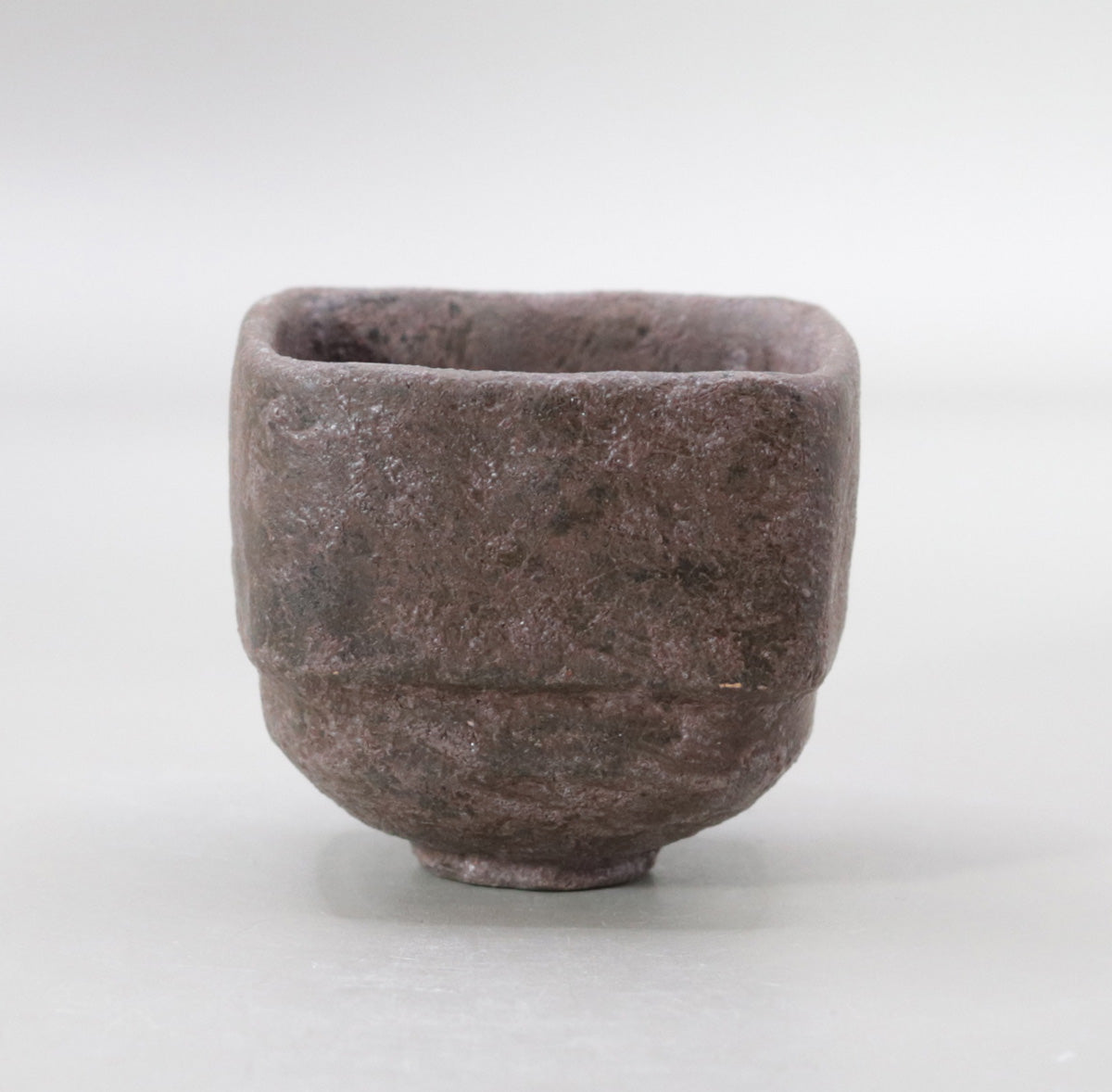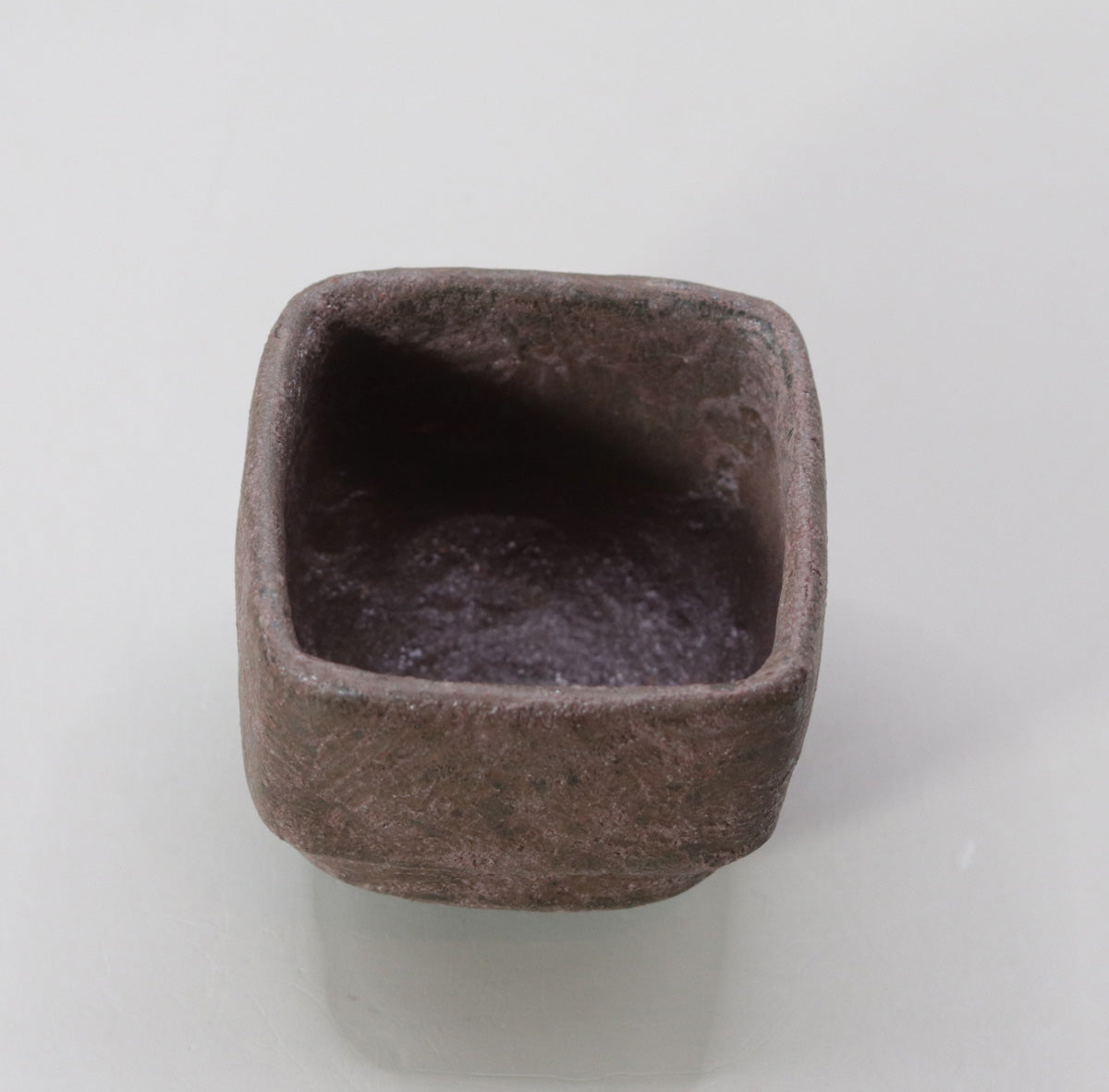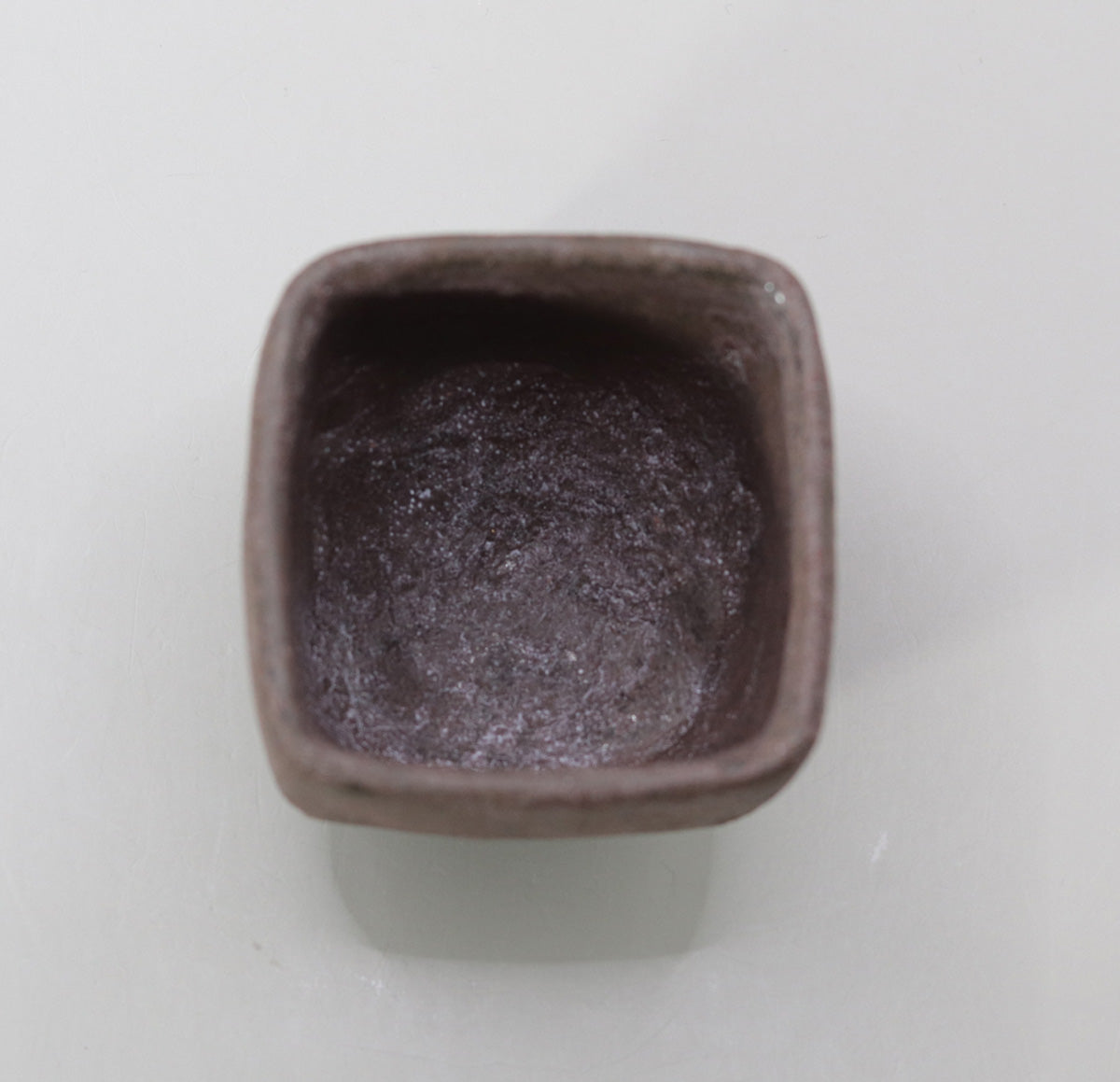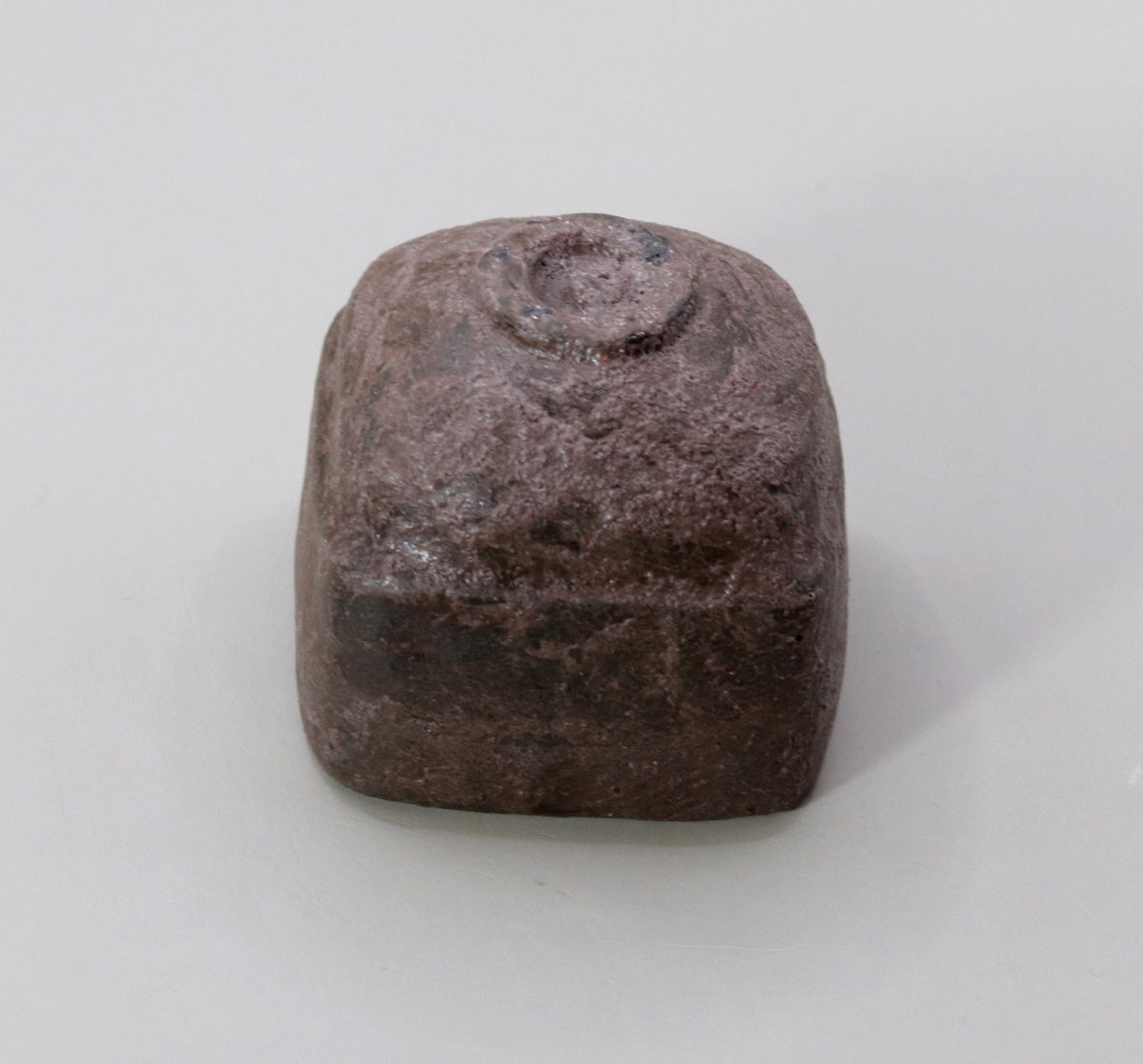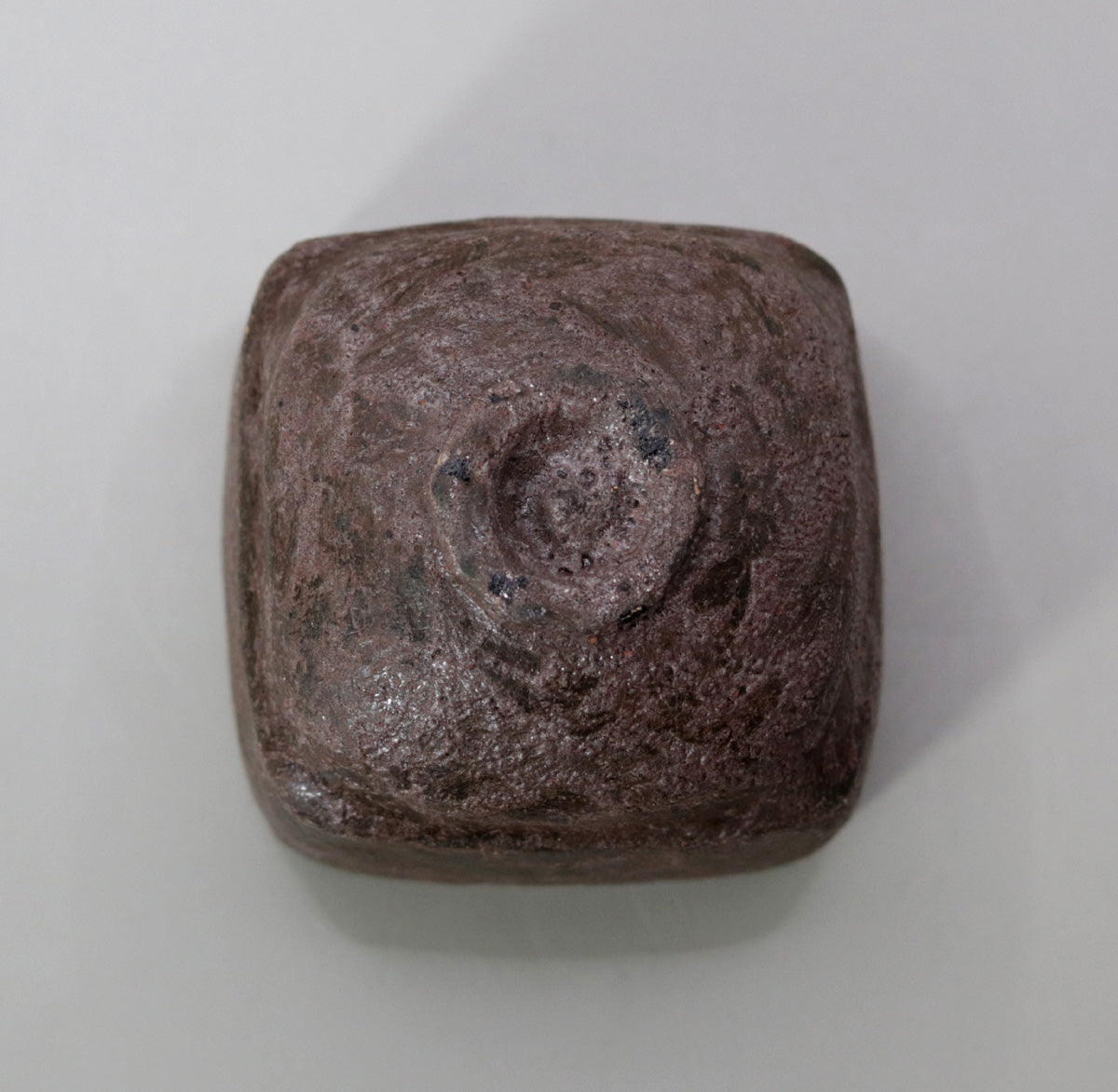Mukiguri sake cup by Yanashita Hideki
Mukiguri sake cup by Yanashita Hideki
Couldn't load pickup availability
Width 6.5cm Height 5.6cm
The "Ima-yaki Black Sake Cup" by Yanagishita Tokiki is a work that is deeply inspired by the black tea bowl "Mukikuri" created in the Momoyama period, and reconstructed as a small sake cup for the modern era. By incorporating the spirituality and beauty of the form of the tea bowl into the format of a sake cup, which is close to everyday life, a masterpiece was born that quietly sits between practicality and art. "Mukikuri" is known as a four-sided black tea bowl by Chojiro, and is a famous bowl that was especially prized and passed down to the Chikusaya Hirase family of Osaka along with "Chikusa Irabo." On the back of the lid of the paulownia wood inner box, there is an inscription by Takutakusai that reads "Chojiro black four-sided tea bowl, Kakumei Mukikuri, Sojo Tomo, Sotan (signature)," and it is thought that the name "Mukikuri" was given to it after the color of the glaze. In Genso's time, it was probably called "Chojiro four-sided black." Additionally, the front of the outer box lid reads "Square, made by Chojiro, owned by Rikyu," and the inside of the lid reads "Rikyu-favorite Chojiro ware, black-colored four-sided tea bowl," confirming that this tea bowl was a favorite of Sen no Rikyu. This black-colored four-sided tea bowl also shares a design with the "shiho-kama" (four-sided kettle) that Rikyu is said to have often used at tea ceremonies in his later years, and it is possible that this work dates back a little later than the early Soeki-style tea bowls "Daikoku" and "Muichibutsu."
"Black as a landscape"
The aesthetics of black seen in the "Peeled Chestnut" are firmly inherited in the "Ima-yaki Black Sake Cup." It is not simply jet black, but a warm black with a reddish hue that has a depth like charcoal, and its appearance changes depending on the viewing angle and the amount of light.
Rather than simply being "black" as a color, it is more fitting to call it "black as a landscape," and it quietly stimulates the gaze and imagination of the person who uses it.
The expression that remembers the firing process
This piece is fired in a short time at a relatively low temperature, following traditional methods. As a result, the glaze shrinks slightly, and slight irregularities and fluctuations appear on the surface of the piece. The black glaze has natural variations in shade, and the brownish base peeks through in places, giving the piece an air of simple serenity. As with the "Peeled Chestnuts," the thick glaze gives the piece a heavy look, and the traces of firing, such as the rough crazing, air bubble marks, and even the clear scissors marks and eye marks on the foot, are intentionally left visible, appealing to the senses of the viewer.
Feel the calm and beauty in your hands
This sake cup is small, but has a striking presence. The rim is slightly thin, which accentuates the smooth flow of sake and the ease of drinking. The shape fits naturally to the fingertips, making it both easy to use and visually beautiful.
Just as the shape of a peeled chestnut is four-sided at the top and rounded at the bottom, this piece follows that same design while achieving a natural harmony that suits its use as a sake cup.
Preserving historical memory
The "Peeled Chestnut" was once owned by Goto Saburoemon during the Enshu period, and even further back, it is said to have belonged to a person called "Yukairo of the South." It has also been suggested that it may have belonged to Rikyu himself at an earlier stage. A letter from Soza (Haraso) states, "Chojiro's black square tea bowl, inscribed with "Peeled Chestnut"... a rare treasure that can be treasured," suggesting that this tea bowl has been passed down with great care. Furthermore, a copy of a black square tea bowl by Ichi-nyu remains, and the notes on it state, "The shape is square on top, rounded on the bottom, small dress." This description is similar to the structure of the "Ima-yaki black sake cup," and is an extremely interesting clue in considering how Yanagishita Tokiki sublimated the memory of ancient works into the present.
Reinterpretation of "Ima-yaki"
Yanagishita Toki created this piece with the theme of how to carry on the spirit of "one bowl, one encounter" that is the foundation of Momoyama pottery to the present day. The reason he named it "Ima-yaki" is because he does not only inherit tradition, but also breathes new life into it with modern materials and sensibilities. The soft glaze surface, solid structure, and scenery that includes fluctuations - these are quietly linked to create a poetic existence that is more than just a vessel. Yanagishita Toki built his own kiln in Iga and has worked on various techniques such as Yakishime and Oribe. The underlying theme of his work is the compatibility of "beauty for use" and "beauty for viewing". The Ima-yaki black sake cup is a vessel that you naturally pick up during your daily drink, and at random moments you can feel the time and story hidden within it. As it is used quietly and changes little by little, it will grow into a unique existence for the user.
Hideki Yanashita Profile
Ceramicist 1967 –
Born in Tokyo, Yanagishita is currently based in Iga, Mie Prefecture. Fascinated by pottery from the Momoyama period, he embarked on the path of ceramics. After training in Shigaraki, he built his own anagama kiln in Iga, Mie Prefecture, and opened the Kanda Kiln. Under the tutelage of Sadamitsu Sugimoto, Yanagishita has been creating a wide variety of works , including Raku ware, Yakishime, Ido, and Oribe, while deeply exploring the world of wabi-sabi from his own unique perspective. An important theme in Yanagishita's creations is the quest for new heights , born from the incorporation of modern materials and unique approaches while deeply studying the techniques and spirit of his predecessors. His works question essential beauty that is timeless, and invite the viewer into a deeper world of art.
Base of operations : Iga, Mie Prefecture
Share
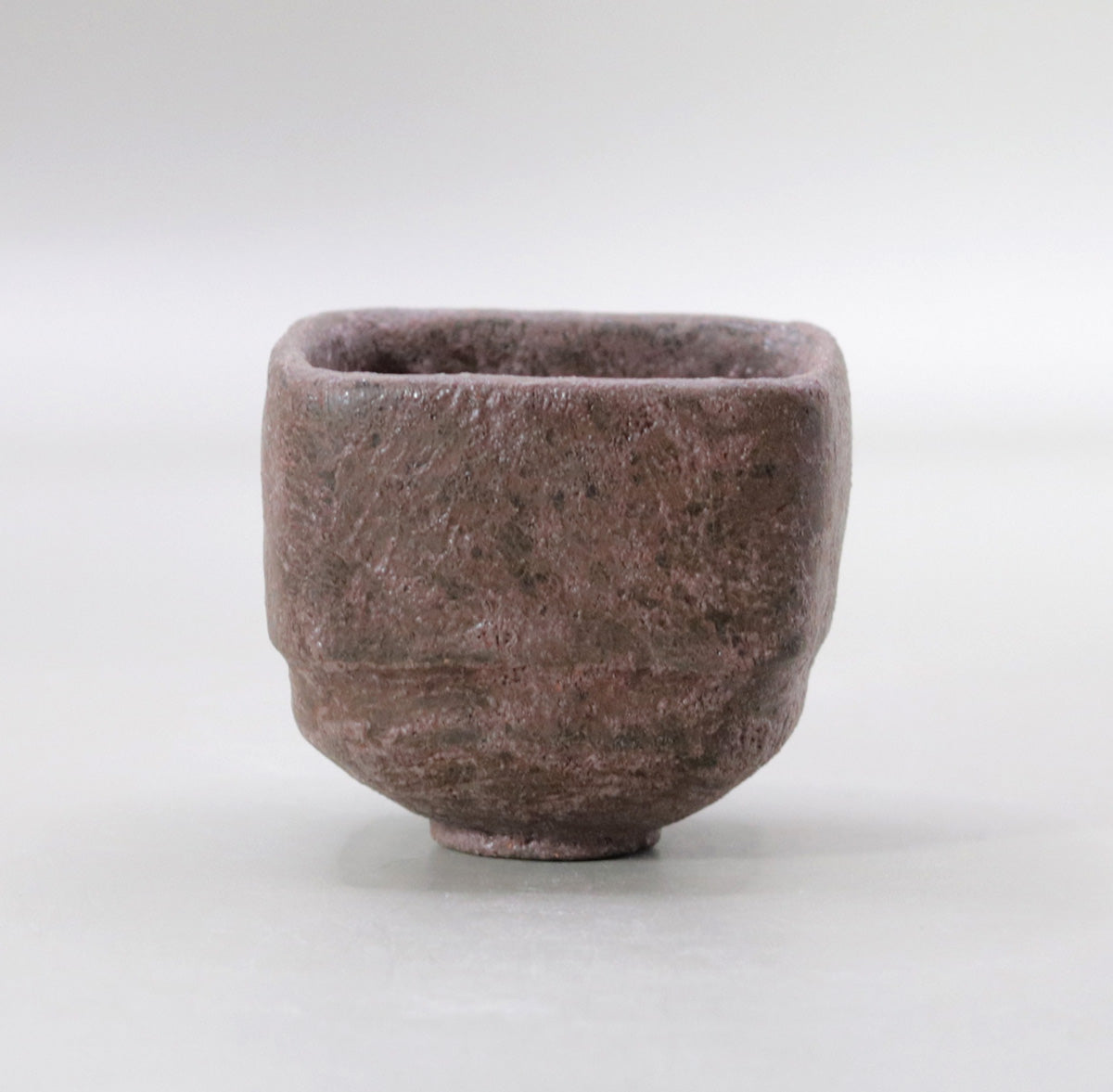
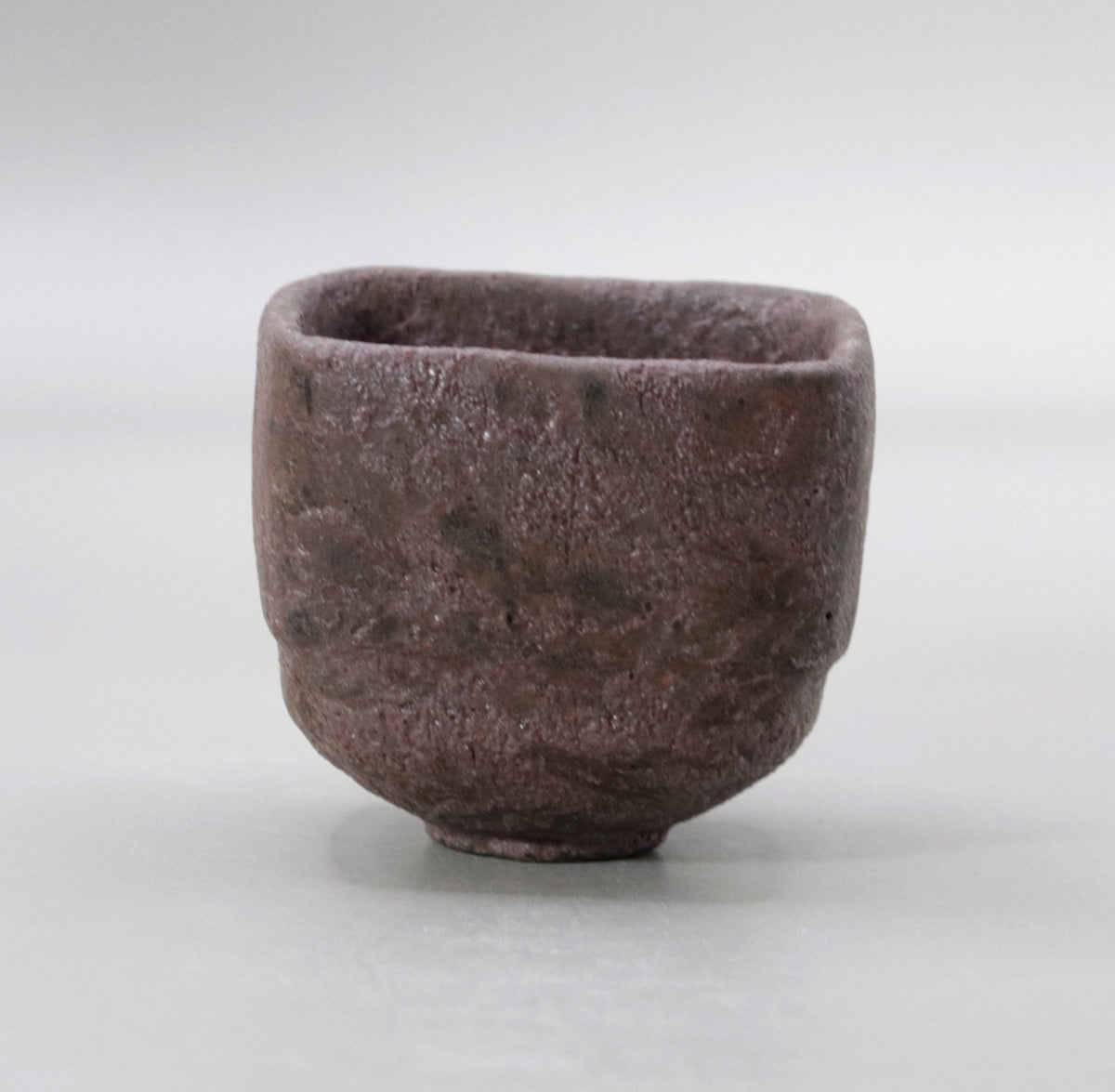
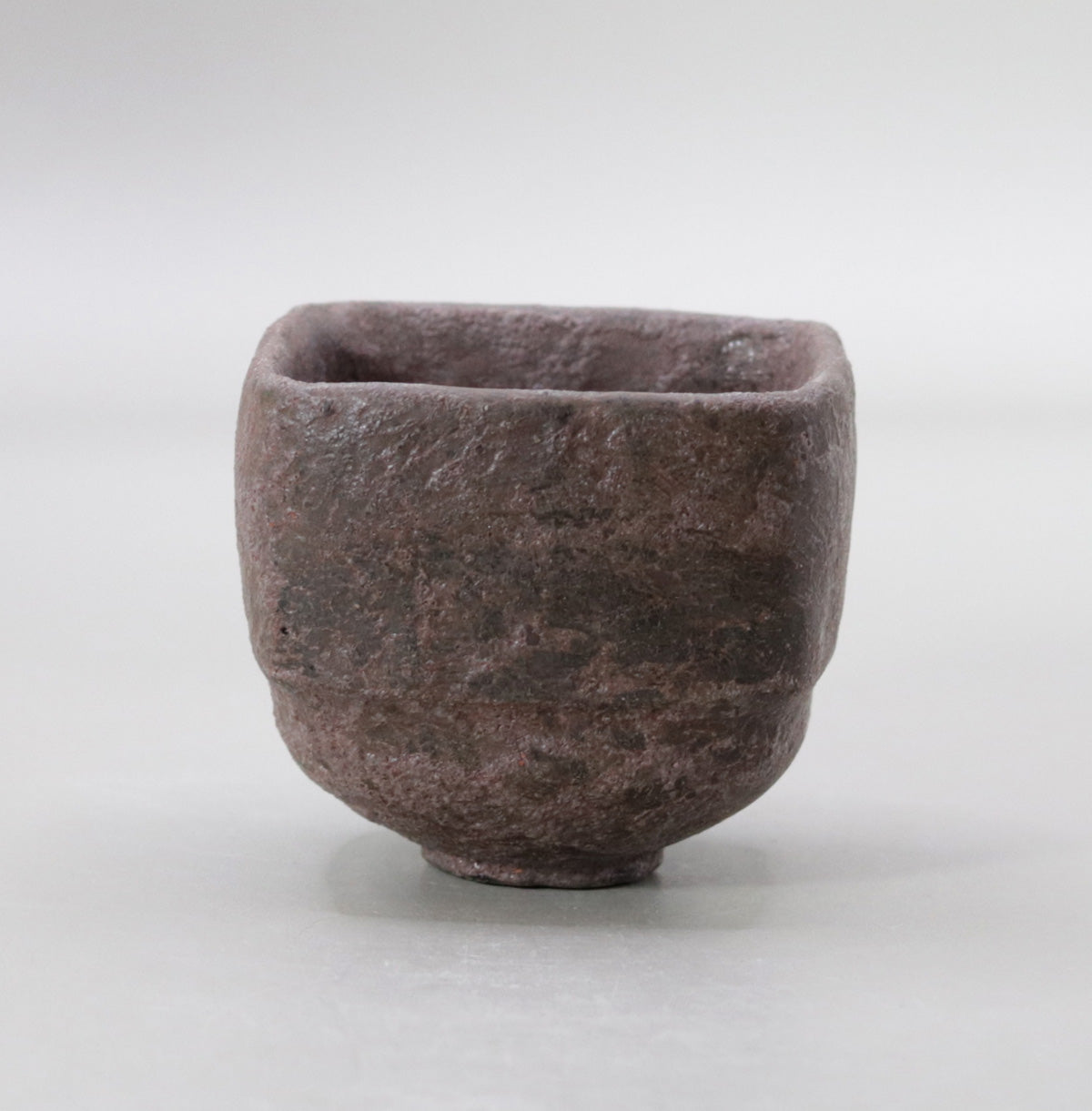
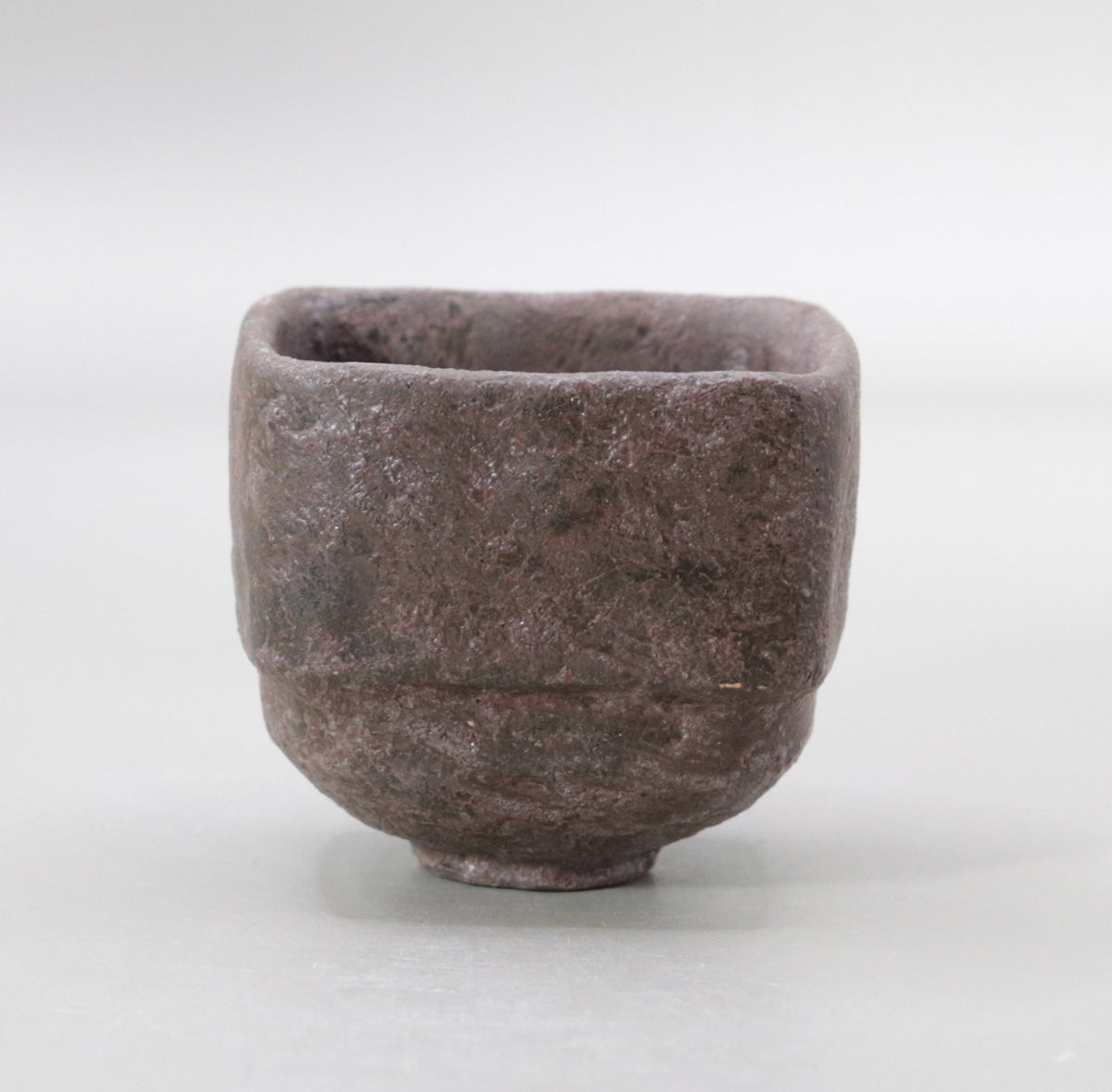
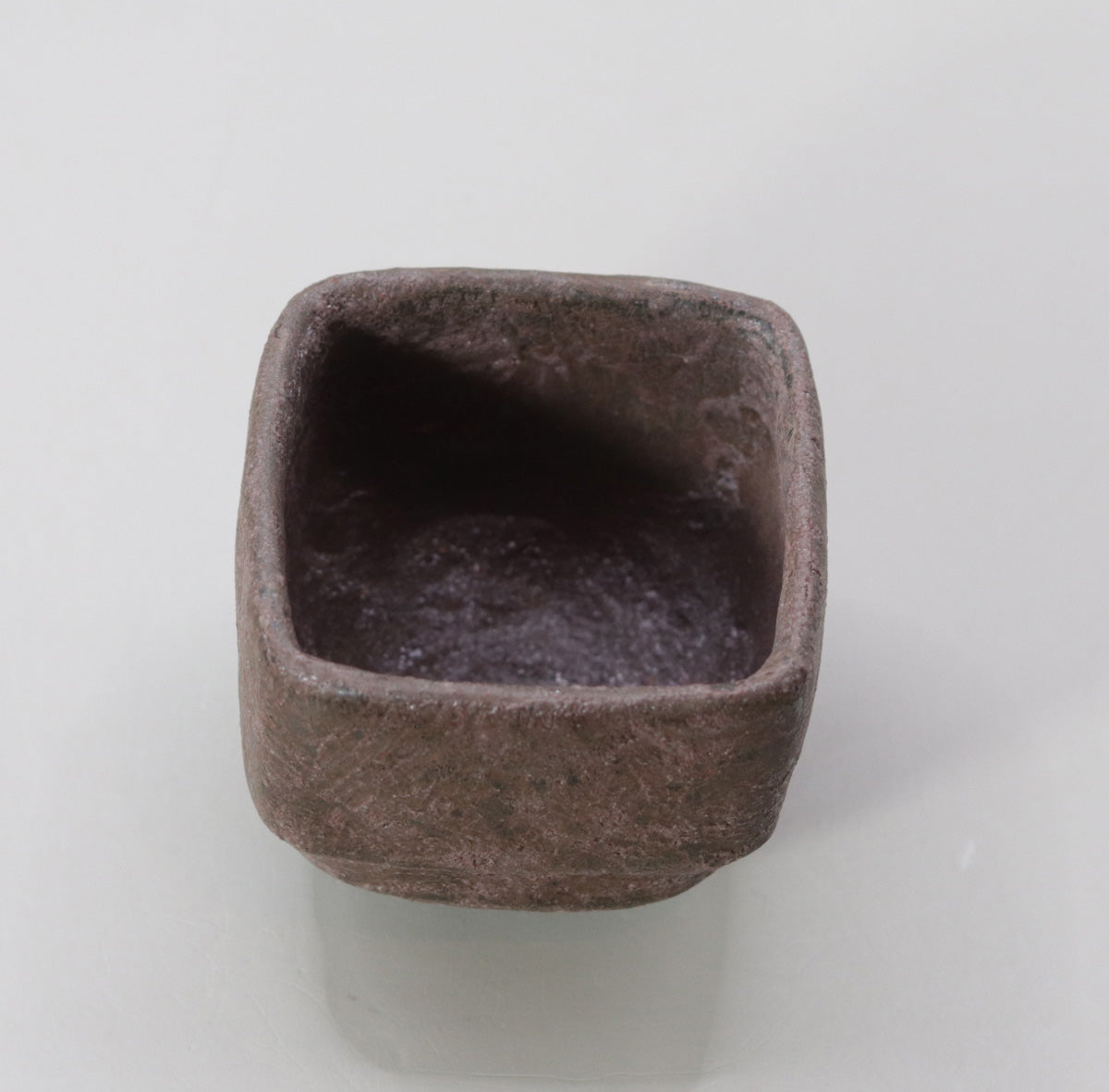
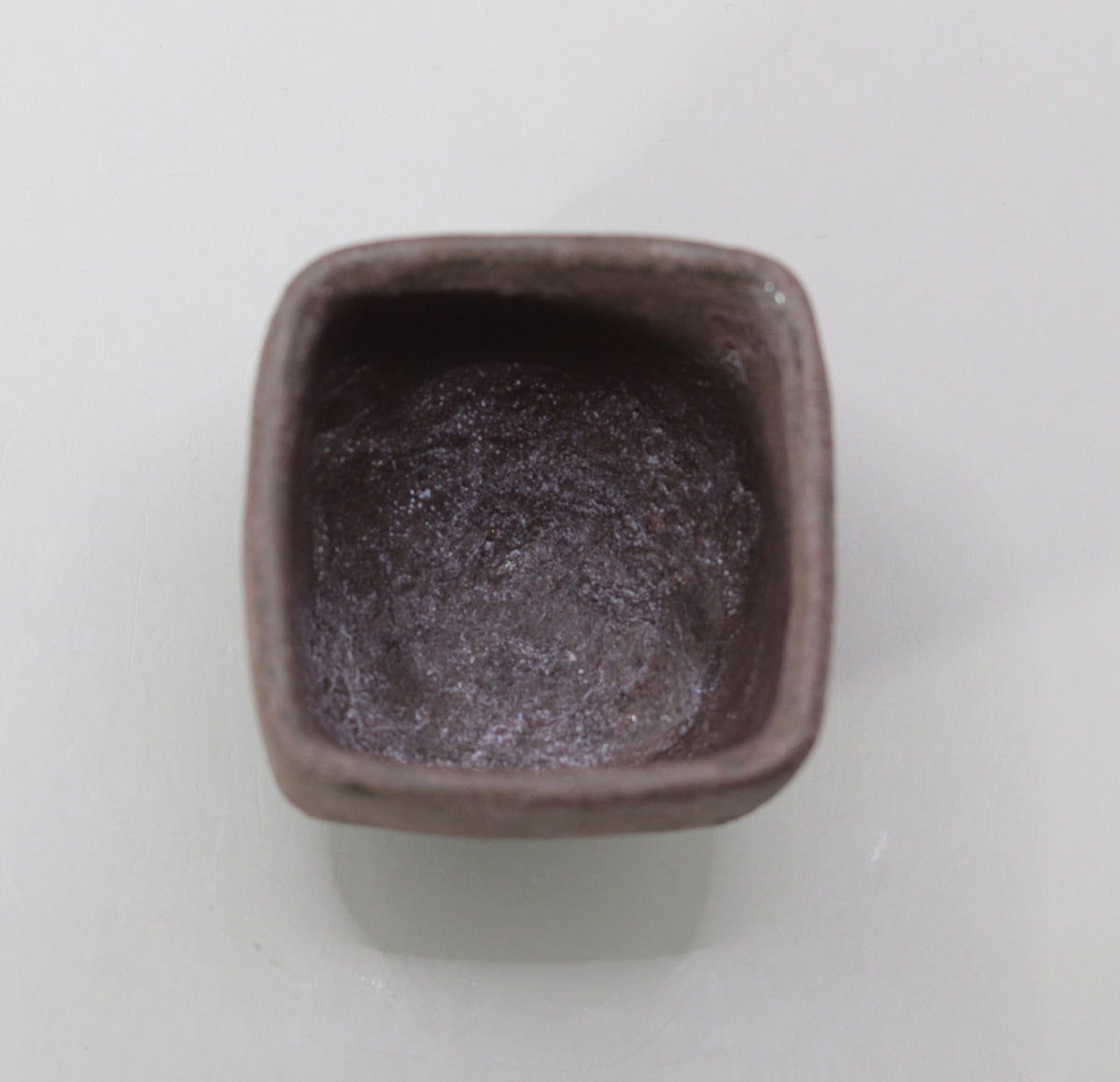
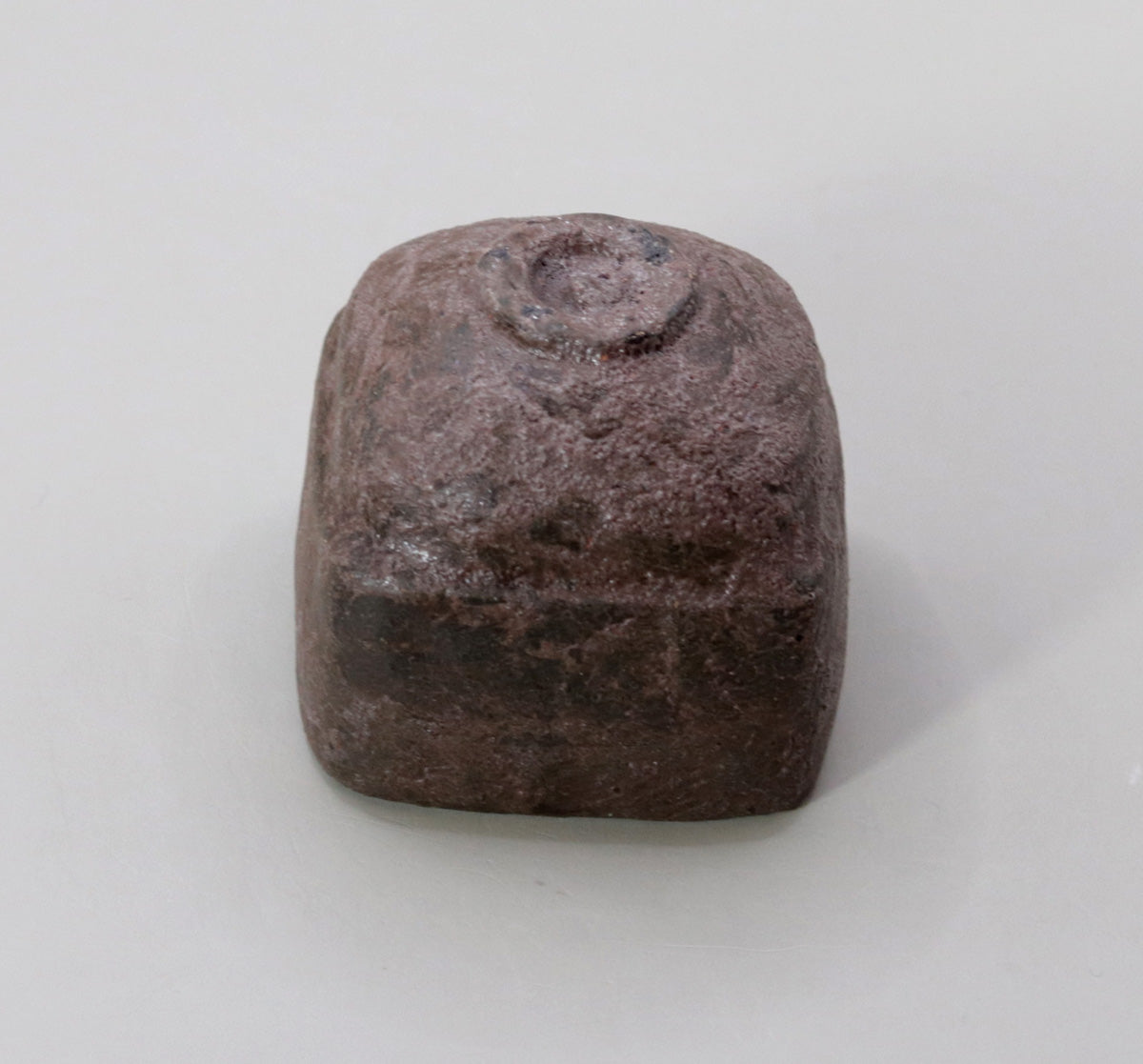
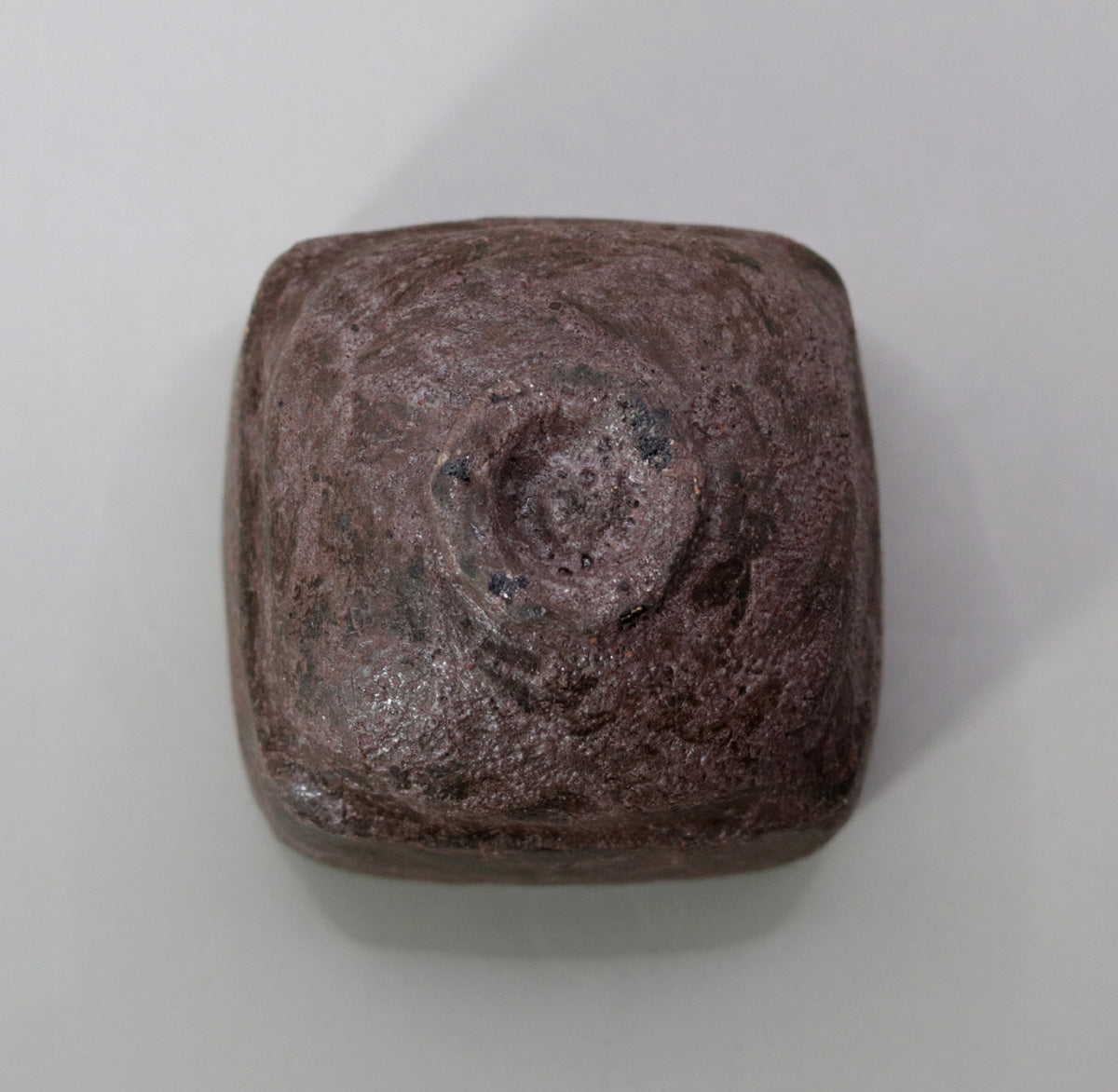
Multi-Column
-
[I will send it to you quickly and carefully]
We carefully package each product in a way that suits it best.
Also, delivery times vary depending on the piece (vessel, etc.).
Items that already come with a box will be shipped within 1-3 days of the order date.
For items that require a box to be made after your order, it will take approximately 30 days for production to be completed and then shipped.
In either case, once we have confirmed your order, we will contact you by email to inform you of the delivery date.
-
[Requests when purchasing pottery]
Even products that look the same may differ slightly in color, shape, size, etc.
The way the glaze is used, the power of the kiln, the firing method, the season, and the humidity also affect the appearance of the pottery.
Please understand the individuality of each piece of pottery and enjoy the unique warmth of handmade.

